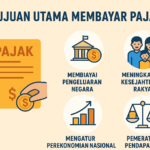Moving Beyond Metrics to Meaning
bigvana – In today’s hyper-competitive, data-rich business environment, Customer Relationship Management (CRM) tools are more than digital Rolodexes. They are insight engines, helping teams decode complex layers of customer behavior. While raw metrics such as click-through rates, purchase history, or open emails give us valuable indicators, they often miss the deeper signals that reflect true customer intent, sentiment, and engagement.
This is where team-based CRM practice comes into play. Regular, structured CRM exercises allow cross-functional teams to collaborate, interpret patterns, question assumptions, and develop customer understanding beyond numbers. By reading between the lines, teams can better anticipate needs, build loyalty, and craft experiences that resonate.
This article explores how consistent CRM practice helps teams develop the skill of reading customer behavior more intuitively. We’ll explore structured strategies, real-world case studies, and practical techniques to integrate this capability into your daily business processes.
The Limitations of Relying Solely on Customer Metrics
Customer metrics are essential—but not always sufficient. A customer may open every email but never convert. Another might abandon their cart repeatedly but still remain loyal. Metrics alone lack context.
Consider a B2B software company with high demo sign-up rates but low conversion. Metrics would highlight interest, but not the friction point. It could be that the trial onboarding process is too complex, or the perceived ROI isn’t communicated well. These insights emerge when teams practice looking beyond the obvious and ask: Why is this happening? What signals are we not seeing?
CRM practice sessions provide the safe space and structure to surface these hidden insights.
How CRM Practice Sessions Improve Interpretive Skills
Just as athletes train to develop muscle memory, teams can develop behavioral intuition through CRM practice. This involves revisiting customer interactions and data within a shared workspace to:
- Identify patterns in non-obvious behaviors (e.g., repeated product page views but no add-to-cart action)
- Spot emotion-based cues in customer service interactions (e.g., tone in chat logs, timing of inquiries)
- Discuss contradictory data and reconcile customer motivations
- Hypothesize behavior and design micro-experiments to validate assumptions
By practicing regularly, teams become more fluent in interpreting not just what customers do, but why they do it.
Building Cross-Functional Customer Empathy
CRM practice isn’t just for sales and support. Marketing, product, success, and operations teams also benefit when they collectively engage in reading customer signals. Cross-functional insights foster a 360-degree view of customer behavior.
Example: A product team may notice churn rates for a particular user segment. Sales might add that this segment often expresses price concerns. Support may report an uptick in confusion around billing. Only through collaborative CRM review does the root cause become clear: a pricing page design issue.
Shared CRM exercises promote organizational empathy and enable proactive changes before customers churn.













